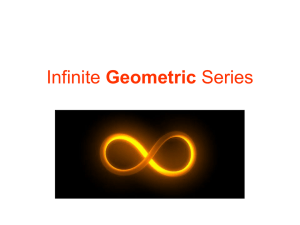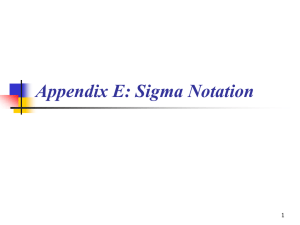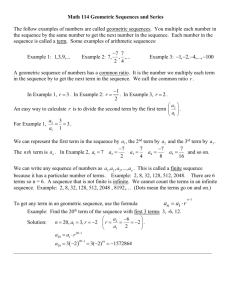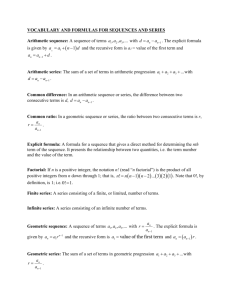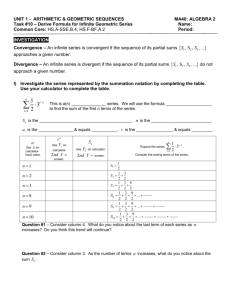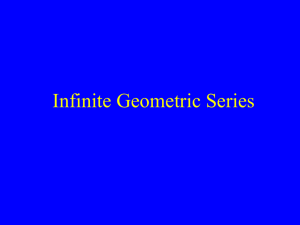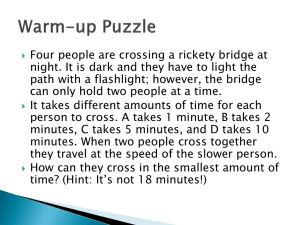Notes 1.5 (PC11) InfiniteGeometricSeries
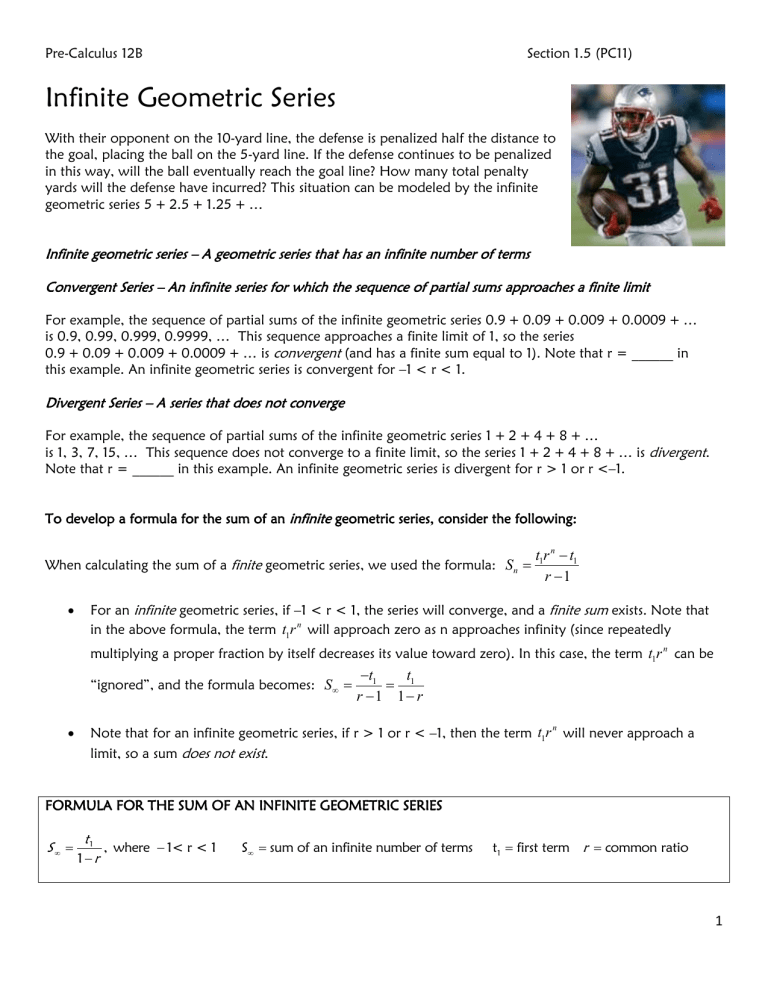
Pre-Calculus 12B Section 1.5 (PC11)
Infinite Geometric Series
With their opponent on the 10-yard line, the defense is penalized half the distance to the goal, placing the ball on the 5-yard line. If the defense continues to be penalized in this way, will the ball eventually reach the goal line? How many total penalty yards will the defense have incurred? This situation can be modeled by the infinite geometric series 5 + 2.5 + 1.25 + …
Infinite geometric series – A geometric series that has an infinite number of terms
Convergent Series – An infinite series for which the sequence of partial sums approaches a finite limit
For example, the sequence of partial sums of the infinite geometric series 0.9 + 0.09 + 0.009 + 0.0009 + … is 0.9, 0.99, 0.999, 0.9999, … This sequence approaches a finite limit of 1, so the series
0.9 + 0.09 + 0.009 + 0.0009 + … is convergent (and has a finite sum equal to 1). Note that r = ______ in this example. An infinite geometric series is convergent for –1 < r < 1.
Divergent Series – A series that does not converge
For example, the sequence of partial sums of the infinite geometric series 1 + 2 + 4 + 8 + … is 1, 3, 7, 15, … This sequence does not converge to a finite limit, so the series 1 + 2 + 4 + 8 + … is
Note that r = ______ in this example. An infinite geometric series is divergent for r > 1 or r <–1.
To develop a formula for the sum of an infinite geometric series, consider the following: divergent .
When calculating the sum of a finite geometric series, we used the formula:
S n
t r n t
1 r
1
For an infinite geometric series, if –1 < r < 1, the series will converge, and a finite sum exists. Note that in the above formula, the term t r
1 n will approach zero as n approaches infinity (since repeatedly multiplying a proper fraction by itself decreases its value toward zero). In this case, the term t r
can be
1 n
“ignored”, and the formula becomes:
S
r
t
1
1 1 t
1
r
Note that for an infinite geometric series, if r > 1 or r < –1, then the term t r n will never approach a limit, so a sum does not exist .
FORMULA FOR THE SUM OF AN INFINITE GEOMETRIC SERIES
S
1 t
1 r
S
sum of an infinite number of terms t
1
first term r common ratio
1
Pre-Calculus 12B Section 1.5 (PC11)
Example 1: Determine the Sum of an Infinite Geometric Series
In the football problem, the total number of penalty yards can be represented by the infinite geometric series
. Calculate this sum.
The graph of S n
for 1 n 10 is shown to the left.
For comparison, the graph of
Notice that as n increases, S n
approaches 10.
S n
for 1 n 5 for the infinite geometric series
1 increases, S n
1 1
16 8 4
...
, does not where r = 2, is shown to the right. Notice that as n
approach a fixed value, therefore the series does not have a sum.
Example 2: Sum of an Infinite Geometric Series
Decide whether each infinite geometric series is convergent or divergent. State the sum of the series, if it exists. a.
1
1 3 9 ...
3 b. 12 3
3 3
4 16
...
Solution: a.
1
1 3 9 ...
3 b. 12 3
3 3
4 16
...
2
a.
0.36
Solution: a.
0.36
Pre-Calculus 12B Section 1.5 (PC11)
Example 3: Determine the First Term of an Infinite Geometric Series
The sum of an infinite geometric series is 92 and the common ratio is
1
4
. What is the value of the first term?
Solution:
S
1 t
1 r
Example 4: Apply the Sum of an Infinite Geometric Series to Express a Repeating
Decimal as a Fraction
Express the following repeating decimals as fractions.
b. 4.16
b. 4.16
3
Pre-Calculus 12B Section 1.5 (PC11)
Example 5: Apply the Sum of an Infinite Geometric Series
A ball is dropped from a height of 15 m and bounces to a height of 9 m. The ball continues to bounce to 60% of the previous height. a.
How far has the ball traveled vertically by the time it hits the ground for the seventh time? b.
How far has the ball traveled vertically by the time it comes to rest?
Solution: a.
By the time the ball hits the ground for the seventh time, it has traveled a total vertical distance of:
[2(15+ 9 + 5.4 + 3.24 + … + t
7
) – 15] m
So, first determine the sum of the series 15+ 9 + 5.4 + 3.24 + … + t t
1
_________ r = _________ n = _________
7
S n
t r r n
1
1)
Then calculate the total distance:
Total distance = __________________________________________________ b.
Determine the sum of the infinite series 15+ 9 + 5.4 + 3.24 + …
S
1 t
1 r
Then calculate the total distance:
Total distance = __________________________________________________
4
